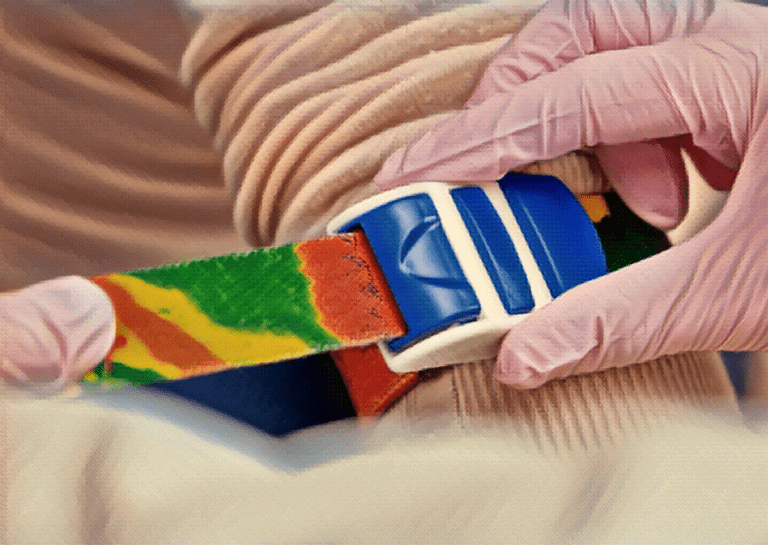Among the many big and small issues that can cause uncontrollable crying in infants, hair tourniquets are one of the lesser-known. A hair tourniquet is a name given to a strand of hair that becomes tightly wrapped around an appendage such as a finger, toe, or genitalia.
When an appendage becomes tightly constricted in this way, essential functions such as circulation and lymphatic drainage are reduced. This can lead to serious pain and swelling, which can cause an infant to become inconsolable.
This article discusses everything parents and caretakers should know about hair tourniquets so that hopefully this preventable issue doesn’t go unnoticed.
Table of contents
Hair tourniquets
Hair tourniquets are dangerous because they are difficult to detect. They can be near-invisible and are almost always concealed by clothing such as socks or diapers. Furthermore, they can go unnoticed simply because parents do not suspect that they are the reason behind their baby’s constant crying and distress.
Hair tourniquets are a rare occurrence, and most often involve the toes. Strangulation of the toes is most common in infants under age 6. Finger strangulation is also common and has been found to affect newborns in their first few days of life. This usually happens not because of stray hairs entrapping their digits, but because of loose threads from mittens worn by infants to prevent scratching of the face and eyes.
Strangulation of the external genitalia happens less often than strangulation of the fingers and toes.
Causes of hair tourniquets
Despite being a rare occurrence, hair tourniquets can happen easily. Stray hairs can become lodged inside a sock, glove, or baby grow. When the infant moves their fingers or toes within the restricted space of the garment, the stray hair can become tightly wound around the appendage.
Over a short period of time, this constriction can lead to serious pain, constriction, and swelling. Hairs can also get into diapers, where they can wrap around and constrict the genitalia.
The initial discomfort caused by the hair tourniquet naturally leads to increased movement and thus greater entrapment of the appendage. For this reason, parents and caretakers must check for hair tourniquets when an infant is inconsolable for no apparent reason.
There are several reasons that hair tourniquets may occur, but one of the most common explanations is postpartum telogen effluvium; a type of hair loss that can affect mothers in the period after they give birth. This happens to around 90 percent of mothers and helps to explain how stray hairs get trapped in infants’ clothing and form hair tourniquets.
Stray hairs can fall into bathwater or become lodged inside garments in the laundry. It is thus important to turn socks and pajamas inside out after washing to check for hairs and loose threads.
Signs and symptoms
Infants suffering from a hair tourniquet will be visibly distressed and irritable. Depending on how long the tourniquet has been wrapped around the appendage, the infant may display mild discomfort or be inconsolable. There is usually swelling and discoloration at the site of strangulation.
There are different types of tourniquets, depending on severity:
Superficial tourniquets: The constriction band is still visible and although swelling is present there is no discoloration or skin breakdown.
Deep tourniquets: More serious, deep tourniquets are deeply embedded into the skin and the constricting band may not be visible. There is swelling accompanied by purple, blue, or black discoloration of the skin. Due to large amounts of swelling, the constricting band of hair may be so deeply embedded in the skin to necessitate sedation and surgical removal.
Management and treatment
Management of hair tourniquets depends on the severity of the constriction and the extent of the tissue damage. If the constricting band is discovered before it cuts deeply into the skin, the hair can be easily removed and there will be no need to see a doctor. However, hair tourniquets that have been in place for hours or days may require sedation and surgical removal. In severe cases, amputation is necessary due to extensive tissue damage.
Hair tourniquets can generally be managed by primary care or emergency physicians. For superficial hair tourniquets where the band of hair is visible, the constricting band can be unwound or cut away from the appendage.
For deep hair tourniquets where the band is so deep that it is no longer visible, the hair should be dissolved with a chemical depilatory agent or hair-removal cream (e.g. Nair, Veet). If using this method at home, follow the instruction on the packaging and ensure that the depilatory agent is left on for no longer than 10 minutes.
References
- Barton DJ, Sloan GM, Nichter LS, Reinisch JF. Hair-thread tourniquet syndrome . Pediatrics. 1988 Dec;82(6):925-8. PMID: 3186385.
- Golshevsky J, Chuen J, Tung PH. Hair-thread tourniquet syndrome. J Paediatr Child Health. 2005 Mar;41(3):154-5. doi: 10.1111/j.1440-1754.2005.00569.x. PMID: 15790330.
- Bean JF, Hebal F, Hunter CJ. A single center retrospective review of hair tourniquet syndrome and a proposed treatment algorithm. J Pediatr Surg. 2015 Sep;50(9):1583-5. doi: 10.1016/j.jpedsurg.2014.11.041. Epub 2014 Nov 28. PMID: 25783322.
- O’Gorman A, Ratnapalan S. Hair tourniquet management. Pediatr Emerg Care. 2011 Mar;27(3):203-4. doi: 10.1097/PEC.0b013e31820d65b7. PMID: 21378520.
